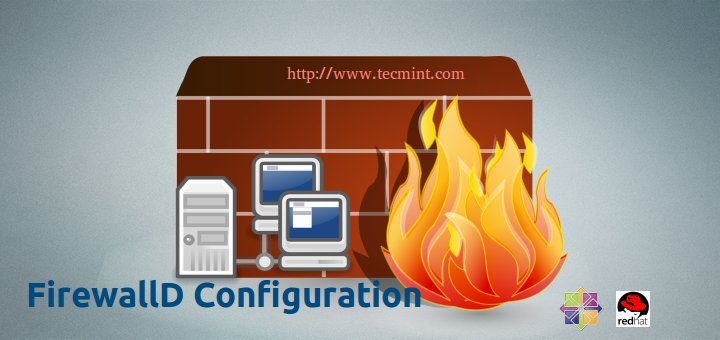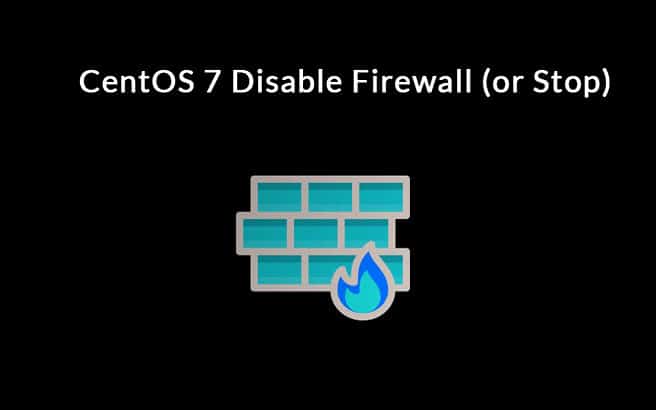How To Save Iptables Rules In Centos 7
Debian Ubuntu Kali and Mint provides package named iptables-persistent. Service iptables save chkconfig iptables on 4.

Hardening A Centos 7 Rhel 7 Server Best Practices And Recommendation Unix Linux The Admins Tutorials
Yum install iptables-services Then enable iptables as services.

How to save iptables rules in centos 7. Netstat -plant Query the systemd journal for a log of the changes that you made to the iptables service by running the following commands. The default one that the installer gives you will be firewalld and to manipulate its rules you need to run the firewall-cmd command. You can give any name to backup file Step 2.
Sudo service iptables save This will save your current iptables rules to the etcsysconfigiptables file which gets loaded by iptables upon boot. Saving firewall rules to etcsysconfigiptables OK or. Firewall-cmd --zonepublic --add-port3000tcp --permanent Then reload rules.
CentOS 6 will not restore the saved IPtables its maddening and a rather insecure design. Iptables-save You can simply save the current rules by executing the command iptables-save followed by. Edit IPTABLES_SAVE_ON_RESTARTyes IPTABLES_SAVE_ON_STOPyes in etcsysconfigiptables-config 3.
Iptables-save command or ip6tables-save command Save or dump the contents of IPv4 or IPv6 Table in easily parseable format either to screen or to a specified file. Add rules to the iptables according to your requirment. The iptables rules backup will be stored in file called iptablesbak as given in above command.
You should install iptables-services package. Sudo ip6tables -L -n -v. Also these commands will work too.
We can use ip6tables-save command which will save the current IPv6 iptables rules into etcsysconfigip6tables ip6tables-save etcsysconfigip6tables iptables-persistent Package For Debian Ubuntu Mint Kali. Another method to save the iptables rules Another option is to use the iptables-save and iptables-restore commands. Open the terminal application and then type the following command to show all IPv4 rules before we start removing all iptables rules.
To save the current iptables rule set into a file of your choice. How do I fix the below command to run on bootreboot. Anyways I had the idea to run it in cron on reboot but everything says pathtocommand.
Here is what I do. We can do so in a couple of ways. The generic method of saving iptables rules is to use the command iptables-save which writes to stdout.
On CentOS 6 and olderCentOS 7 uses FirewallD by defaultyou can use the iptables init script to save your iptables rules. Rootvpscheap-blog sbinservice iptables save iptables. Service iptables save Solution 2.
Apt-get install iptables-persistent If the installation fails please check whether systemd has already had failures before the installation of iptables-persisent. For use the package must simply be installed. For IPv6 rules try.
CentOS 7 is using FirewallD now. Journalctl -f -u iptablesservice journalctl -f -u ip6tablesservice Reboot the server. On CentOS 7 Minimal you may need to install the iptables-services package thanks to RichieACC for the suggestion.
Sudo yum install -y iptables-services And then enable the service using systemd. To take iptables backup. In this brief tutorial let us see how to replace firewall-cmd using Iptables in CentOS 7.
You can also view them using. Overwrite the current rules sudo iptables-restore etcsysconfigiptables Add the new rules keeping the current ones sudo iptables-restore -n etcsysconfigiptables. Making iptable rules persistent 1.
CentOS 7 uses FirewallD by default. Iptables-restore command or ip6tables-restore command. Iptables-save Save currentexisting rules to a file 2.
Systemctl stop firewalld systemctl mask firewalld. If on a server without NetworkManager a common approach is then to use a pre-up command in etcnetworkinterfaces. The last thing to do is to actually save these rules so they get loaded on every reboot.
Iptables-restore Restore back the saved rules from the file Usage with example. Verify that all the rules are present using the command iptables -L. Service iptables save 4.
Reboot iptables-restore tmprulesbackup. You can then simply restore the saved rules by reading the file you saved. The alternative is to remove firewall and install the iptables-services package and use.
Sudo iptables -L -n -v. The iptables rules should be saved and automatically reloaded. But there are still some peoples use and familiar with traditional Iptables.
Iptables -I INPUT -p tcp --dport 3128 -j ACCEPT 2. This package will automatically save the iptables rules to the. To prevent this save the rules to a file.
How to list firewall rules on Linux. Saving iptables firewall rules permanently on Linux. Sudo iptables-save etcsysconfigiptables.
Service iptables restart 5. If you would like to manage iptablesip6tables rules directly without using FirewallD you may use the old good iptables-services service which will load the iptablesip6tables rules saved in etcsysconfigiptables and etcsysconfigip6tables when it is started during boot time. Systemctl enable iptables Now you can save your iptable rules by following command.
The post below describes steps to save iptables persistently. Sudo systemctl enable iptablesservice And run the initscript to save your firewall rules. Use the --permanent flag to save settings.
To do this the rules must be saved in the file etciptablesrulesv4 for IPv4 and etciptablesrulesv6 for IPv6. Iptables-save etcsysconfigiptables ip6tables-save etcsysconfigip6tables AFAIK systemctl doesnt have any option to. Iptables -L 3.
Another option to dump iptablesip6tables rules on screen is to run the following command before you. Iptables-save etcnetworkiptablesrules The output created by iptables-save can then by read on stdin by iptables-restore. How add rule to iptables in Linux CentOS 7 Block other DNS How you do it is dependent on what firewall you are running.
Iptables-save tmprulesbackup Restoring the Rules You can restore the ruleset at a later time by running iptables-restore tmprulesbackup. Then service iptables save will work. Enable the iptables service at boot-time.
On newly shined CentOS 7 Red Hat 7 with systemctl command we can control the service status. You need to use the following commands to save iptables firewall rules forever. For backup and restore process of iptables you should be login with root user in system.
To startstoprestartreload the iptables on CentOS 7 RHEL 7 follow the given below steps. But after shutdown -r now current iptables rule disappear. They are found under etcsysconfigiptables.
Manage iptables with systemctl.

Centos 7 Disable Firewall Or Stop Learn To Stop Start Restart And Disable

Komentar
Posting Komentar